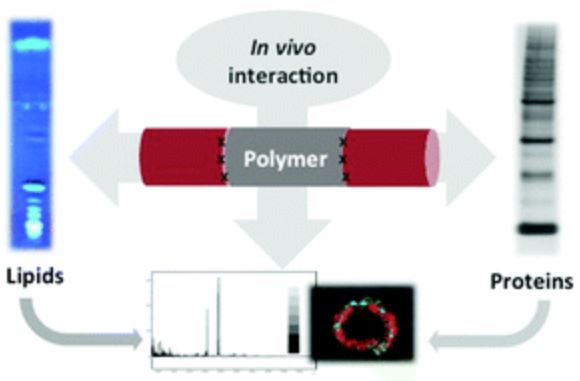 Sophie M. Fröhlich, Magdalena Eilenberg, Anastasiya Svirkova, Christian Grasl, Robert Liska, Helga Bergmeister and Martina Marchetti-Deschmann
Sophie M. Fröhlich, Magdalena Eilenberg, Anastasiya Svirkova, Christian Grasl, Robert Liska, Helga Bergmeister and Martina Marchetti-Deschmann
Analyst. 2015 Sep 7;140(17):6089-99.
Cardiovascular diseases present amongst the highest mortality risks in Western civilization and are frequently caused by arteriosclerotic vessel failure. Coronary artery and peripheral vessel reconstruction necessitates the use of small diameter systems that are mechanically stress-resistant and biocompatible. Expanded polytetrafluorethylene (ePTFE) is amongst the materials used most frequently for non-degradable and bio-degradable vessel reconstruction procedures, with thermoplastic polyurethanes (TPU) representing a promising substitute. The present study describes and compares the biological adsorption and diffusion occurring with both materials following implantation in rat models. Gel electrophoresis and thin-layer chromatography, combined with mass spectrometry and mass spectrometry imaging, were utilized to identify the adsorbed lipids and proteins. The results were compared with the analytes present in native aorta tissue. It was revealed that both polymers were severely affected by biological adsorption after 10 min in vivo. Proteins associated with cell growth and migration were identified, especially on the luminal graft surface, while lipids were found to be located on both the luminal and abluminal surfaces. Lipid adsorption and cholesterol diffusion were found to be correlated with the polymer modifications identified on degradable thermoplastic urethane graft samples, with the latter revealing extensive cholesterol adsorption. The present study demonstrates an interaction between biological matter and both graft materials, and provides insights into polymer changes, in particular, those observed with thermoplastic urethanes already after 10 min in vivo exposure. ePTFE demonstrated minor polymer modifications, whereas several different polymer signals were observed for TPU, all were co-localized with biological signals.


No responses yet